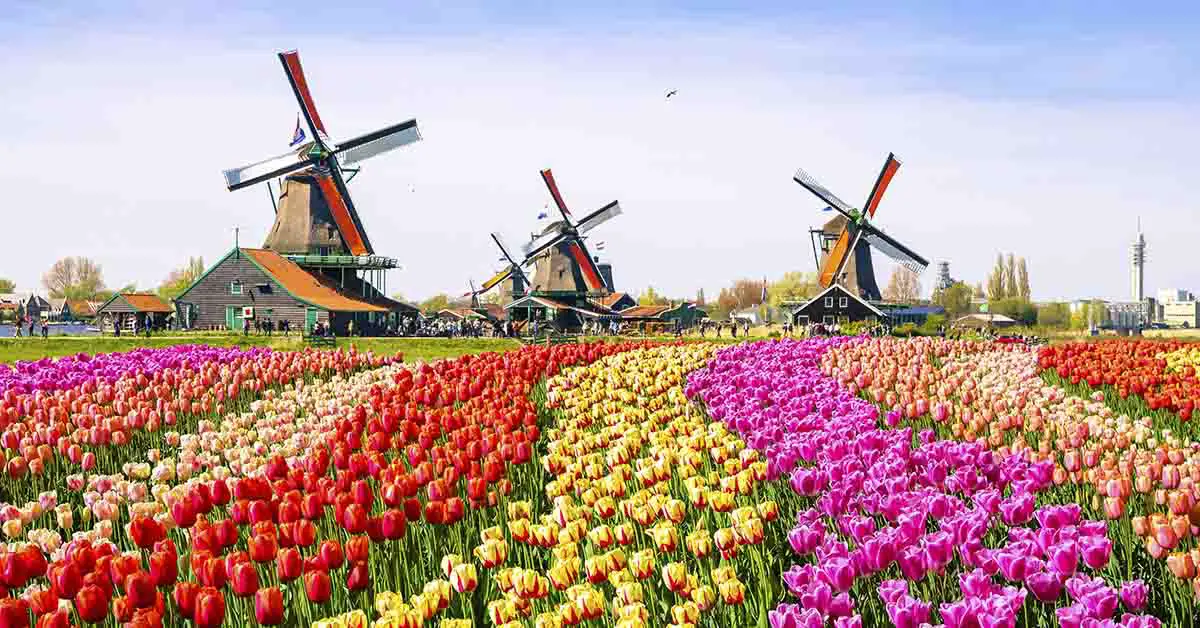The Netherlands stands out as one of Europe’s most charming countries, boasting twelve provinces adorned with canals, cycling paths, windmills, tulip fields, and vibrant cities like Amsterdam and The Hague. Rich in history and possessing a Disney-like allure, this article will guide you through some of the Netherlands’ most surprising discoveries. From peculiar fast-food choices to a deep affection for clogs, explore the intriguing events, foods, places, and more that make the Netherlands truly unique.
1. Urinals placed outdoors

Customs vary significantly worldwide. In the United States, witnessing someone publicly urinating would be considered shocking. However, in Amsterdam, the Netherlands, the country has freely accessible outdoor urinals that people can use, and this practice is not deemed distasteful; rather, it is considered normal.
Read: 30 Photos Of Things You’ll Be Glad You Haven’t Seen Before
2. More bicycles than people

The Netherlands stands out as one of the most bike-friendly countries globally, with a cycling obsession that took root in the 1970s. During this period, Dutch officials shifted their focus away from cars, aiming to build more livable and safer cities. The government initiated a redesign of major cities, introducing extensive bike lanes and fostering a culture of cycling safety. This effort seems to have yielded positive results, with only 14.6% of the Dutch population classified as obese, in contrast to the 30.7% obesity rate in America.
3. So many windmills
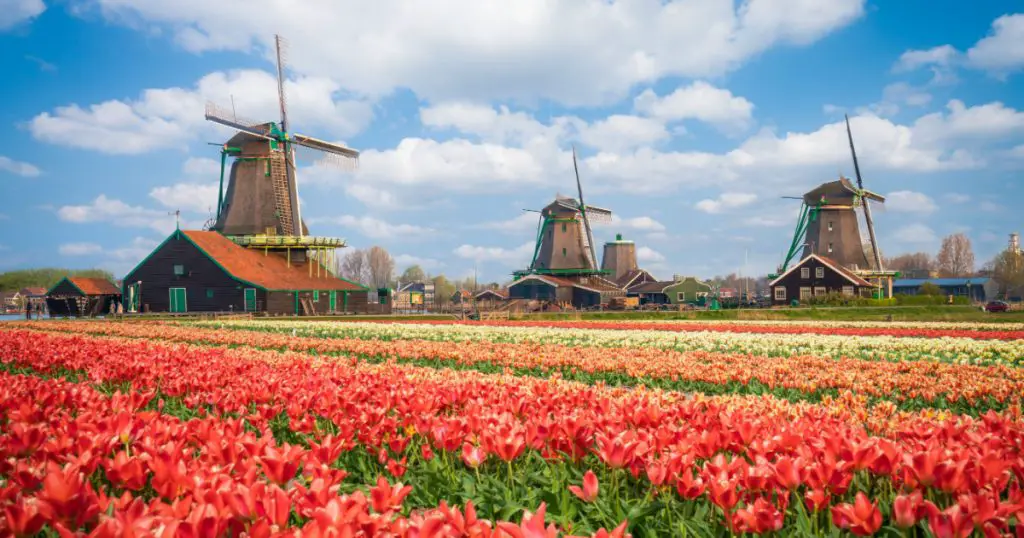
Over the centuries, windmills played a crucial role in the Netherlands by pumping water from the lowlands and redirecting it to the riverbanks, enabling farmers to cultivate the land. Today, the Netherlands still boasts around 1,000 windmills and a significant number of them remain operational, continuing to contribute to various functions.
4. Inspection Toilets
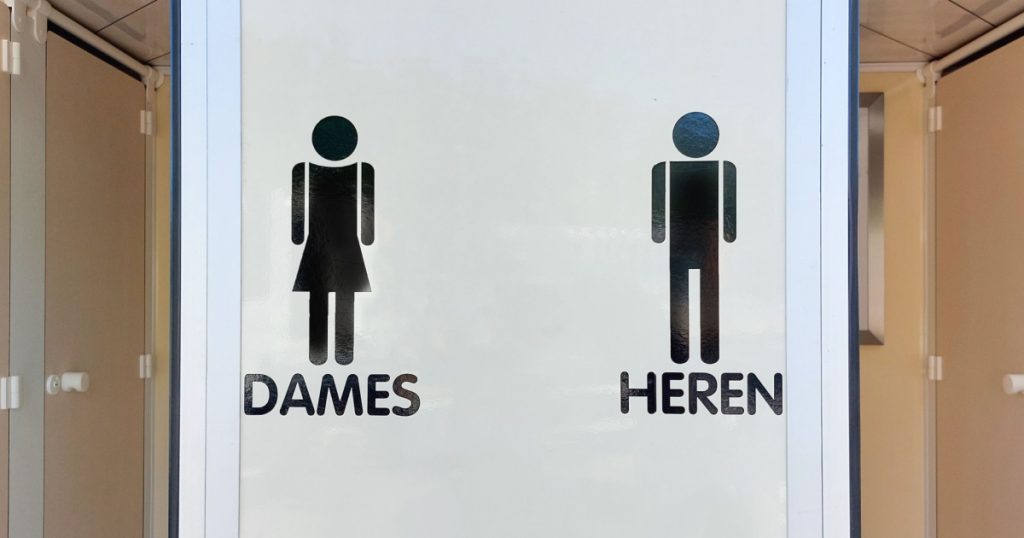
According to the Dutch Review, Dutch toilets have some aspects that might be less appealing compared to traditional toilets. In conventional toilets, waste typically disappears underwater, swiftly and effortlessly exiting the toilet upon flushing. In contrast, Dutch toilets feature what the Dutch humorously refer to as the “inspection shelf.” This design prevents waste from going directly into the water. As the Dutch Review describes it, using Dutch toilets might make you “say hello to your food again.”
5. Electric Ladyland is not your typical art museum

It is a unique establishment known as the Museum of Fluorescent Art. What sets this museum apart is its focus on showcasing art that comes to life under ultraviolet (UV) light. Visitors to Electric Ladyland can explore a fascinating world of fluorescent colors and illusions. The museum features a variety of fluorescent artworks, including paintings, sculptures, and installations, all designed to interact with UV light in captivating ways.
Read: This Village Without Roads Is Straight Out Of A Fairytale Book
6. The world’s biggest gummy bear

Tanis Confectionery, a candy company hailing from the Netherlands, took on a remarkable project in the spring of 2023. The company assembled dedicated teams to embark on the ambitious task of creating the world’s largest gummy bear. Their efforts proved successful, as the Dutch firm achieved its goal and secured the world record for the largest gummy bear.
7. Self-serve fast food
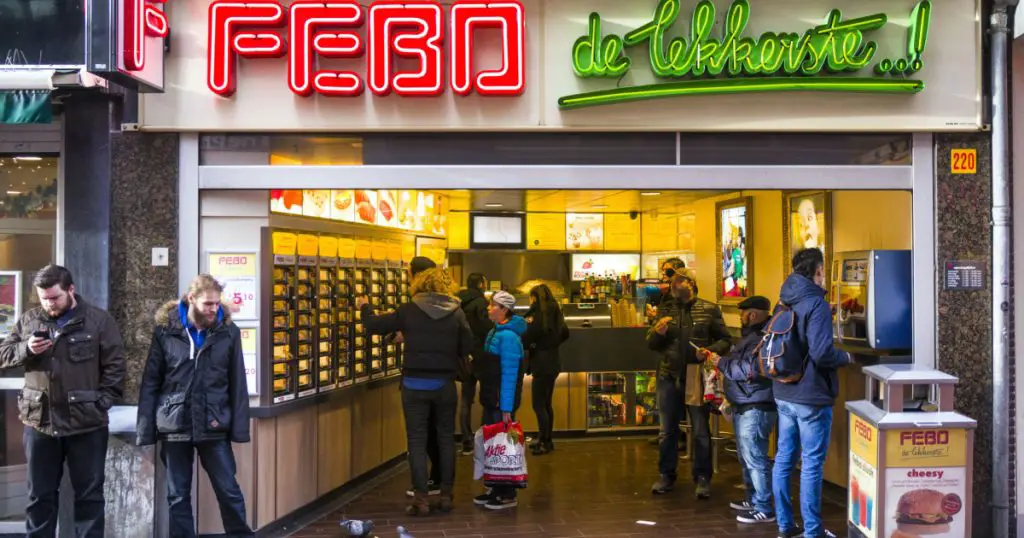
In the Netherlands, self-serve fast food options are quite popular. Many fast-food establishments offer self-service kiosks where customers can order and customize their meals. This convenient and efficient approach allows patrons to quickly select and pay for their meals without the need for traditional counter service.
8. National RedHead Day

National Redhead Day in the Netherlands is a celebration dedicated to individuals with red hair. Held annually on the first weekend in September, this event gathers redheads from across the country to share in the festivities. During this vibrant and inclusive celebration, participants often engage in activities, socialize, and embrace the unique aspects of being a redhead.
9. A giant cheese market
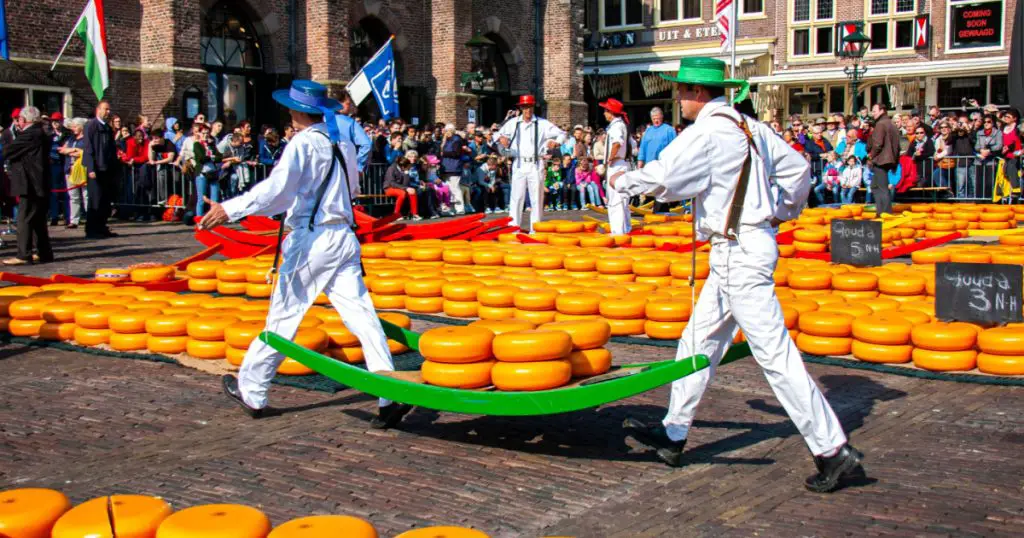
The Netherlands is known for its traditional and bustling cheese markets. One of the most famous is the Alkmaar Cheese Market, where visitors can witness the spectacle of cheese trading in a historical setting. Held during the cheese season from April to September, this market features the iconic wheel-shaped cheeses being weighed, inspected, and sold, offering a delightful experience for both locals and tourists alike.
10. National Skirt Day

National Skirt Day in the Netherlands is an annual event that takes place in early April, signaling the arrival of spring. On this day, women across the country embrace the warmer weather by wearing skirts, often in bold and colorful styles. The celebration is a lighthearted tradition that marks the transition from winter to spring, bringing a sense of joy and fashion-forward flair to the streets of the Netherlands.
11. Chocolate on bread – for breakfast
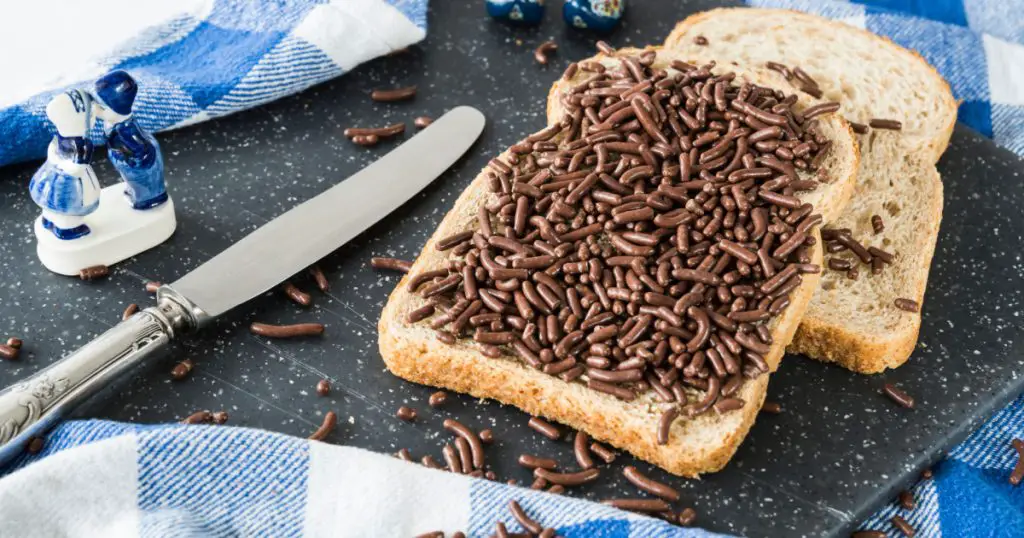
In the Netherlands, it’s a common and delicious practice to enjoy chocolate sprinkles on bread for breakfast, known as “hagelslag.” This popular Dutch breakfast treat involves spreading butter on a slice of bread and generously sprinkling chocolate hagelslag on top. It adds a sweet and indulgent start to the day, and variations with other toppings like fruit sprinkles or peanut butter are also enjoyed.
Read: Chocolate Lovers Shocked After Finding Out What M&M’s Stands For
12. A candy so sweet, nobody wants it

Borstplaat, a traditional hard Dutch candy, holds the distinction of being one of the “worst-rated foods in the Netherlands.” Known for its intensely sweet flavor, even those with a strong penchant for sweets might find it overwhelming. Borstplaat’s reputation as a heavy and excessively sweet treat contributes to its less favorable rating among food enthusiasts.
13. The healthiest eating in the world
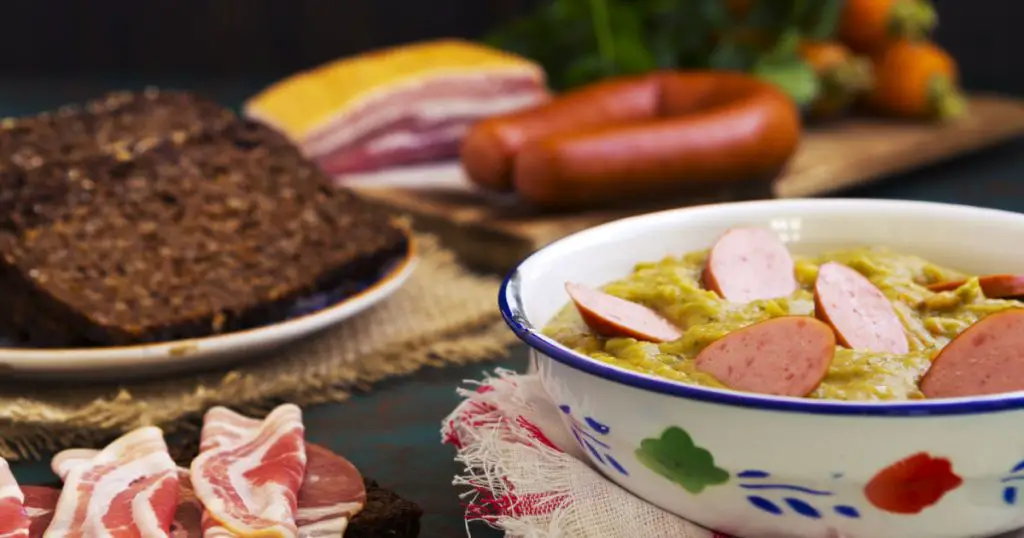
The Netherlands holds the top spot on Oxfam’s Food Index, which ranks countries based on the healthiness, abundance, and affordability of their food. Surpassing countries like Switzerland and France, the Netherlands is recognized for its commitment to healthy eating, despite the presence of tempting Dutch desserts and sweets. The ranking underscores the country’s achievement in providing its citizens with nutritious and accessible food options.
14. The Van-Gogh bicycle path

The Van Gogh Bicycle Path in Eindhoven is renowned for its extraordinary beauty. Each night, the stones on this path come alive, glowing, and glittering to pay homage to Vincent Van Gogh’s famous painting, “Starry Night.” This innovative and visually stunning tribute creates a unique and immersive experience for cyclists, combining art and infrastructure in a captivating way.
15. A macabre museum of torture

For those in the mood for something macabre, a visit to Amsterdam’s Torture Museum offers a glimpse into a time when justice was served through spikes and sticks. This darkly lit museum houses artifacts that detail various historical methods of torture, providing a chilling insight into the darker aspects of the past. It offers a somber yet intriguing experience for those interested in the history of justice and punishment.
Read: These Are The Creepiest Stories On Wikipedia You Won’t Be Able To Stop Reading
16. Another museum about things a lot smaller

Micropia opened in the fall of 2014 in Amsterdam, is a unique museum dedicated to disseminating information about microbes. While microbes can indeed cause disease and illness, they are also essential to human life. Micropia has a dual focus, highlighting both the benefits of microbes and their potential harm, providing visitors with a comprehensive understanding of the role these microorganisms play in our lives.
17. The Cube Houses
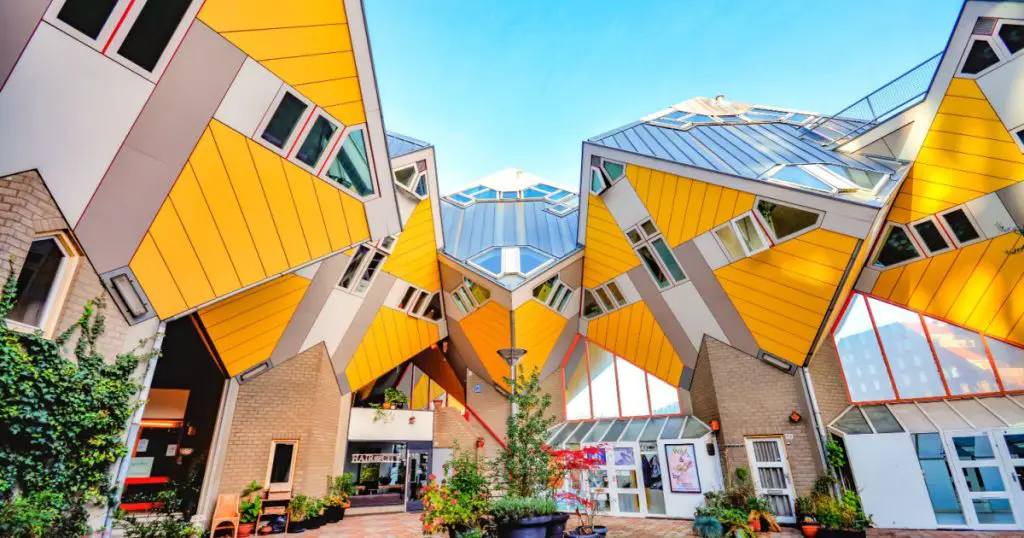
Designed by Dutch architect Piet Blom, the Cube Houses of Rotterdam stand as one of the most iconic landmarks in the Netherlands. These distinctive homes are vibrant, yellow cubes that have been tilted at seemingly impossible angles, creating a visually striking and unconventional architectural ensemble in the heart of Rotterdam.
18. On King’s Day, they wear orange

While the Dutch national flag is red, white, and blue, the true national color of the Netherlands is orange. This stems from the fact that the Royal Family of the Netherlands belongs to the House of Orange, a tradition dating back to 1544. The association with the House of Orange has made the color orange a symbol of national pride and identity in the Netherlands.
19. The Netherlands sort of caused orange carrots
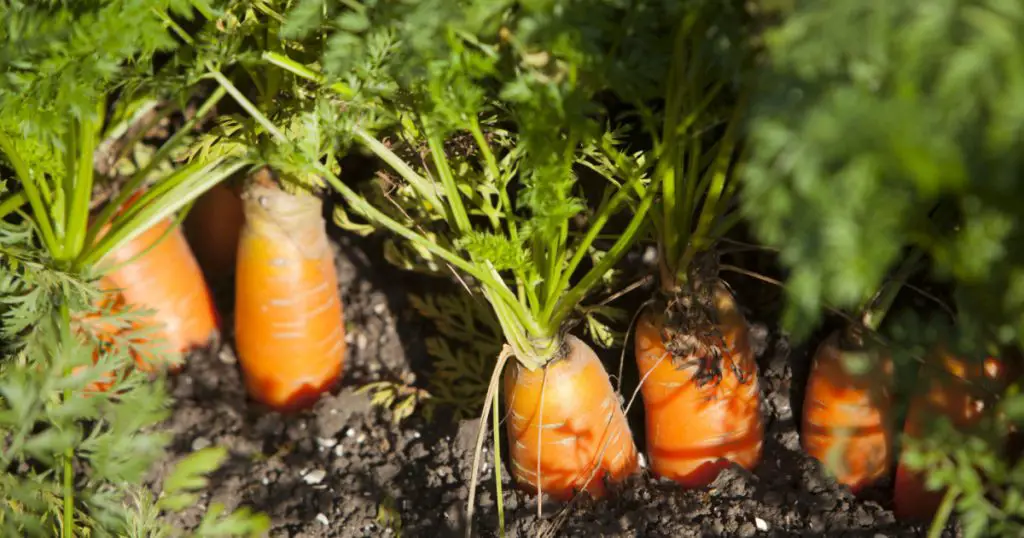
Carrots are largely orange, thanks to the Netherlands. Before the 17th century, most carrots came in white, purple, or yellow varieties. The transformation occurred when Dutch farmers, who were significant carrot exporters, changed the hue to orange in honor of William of Orange. This historical shift contributed to the prevalence of orange carrots that we commonly see today.
20. Plague hospital turned medical museum

Museum Boerhaave, located in Leiden, is one of the most distinctive museums in the Netherlands. Originally a plague hospital, it has been transformed into a medical museum featuring skeleton dioramas, preserved arms in jars, and an array of historical medical devices. This unique collection offers visitors a fascinating glimpse into the history of medicine and showcases the evolution of healthcare practices over the years.
21. Tulips stretching as far as the eye can see

The Bloemen Route, or Flower Route, spans twenty-five miles through the tulip fields of the Netherlands, showcasing the stunning beauty of the country’s floriculture. The vibrant rows of colorful flowers along this route pay homage to the rich tradition of flower cultivation, which has thrived in the Netherlands since 1593. It provides a picturesque journey for visitors, offering a glimpse into the country’s deep connection with the cultivation and appreciation of flowers.
Read: Giant Urban Flowers Bloom When Pedestrians Pass By Under Them
22. The alarm sounded on Mondays isn’t much of an alarm

If you happen to be in the Netherlands and hear a distressing, gut-wrenching alarm echoing across the entire country, there’s no need to panic. This somewhat alarming sound occurs every first Monday of the month at noon, but the Dutch tend to completely ignore it, allowing residents to sit back and take a deep breath without any cause for concern.
23. Cut-like birthday parties

Dutch birthdays may seem ordinary with tea, coffee, and obligatory cake, but the unique part lies in the celebration ritual. Dutch birthday gatherings involve everyone sitting in a complete circle around the birthday person. Creating a somewhat cult-like ambiance. While the Dutch sing traditional birthday songs, the unfamiliar sounds may seem almost Satanic to those unfamiliar with the Dutch language. Rest assured, if you encounter this distinctive celebration in a Dutch home, there’s no cause for alarm. It’s simply a festive and joyous birthday tradition!
24. Not only salty licorice but a remarkable amount consumed in general
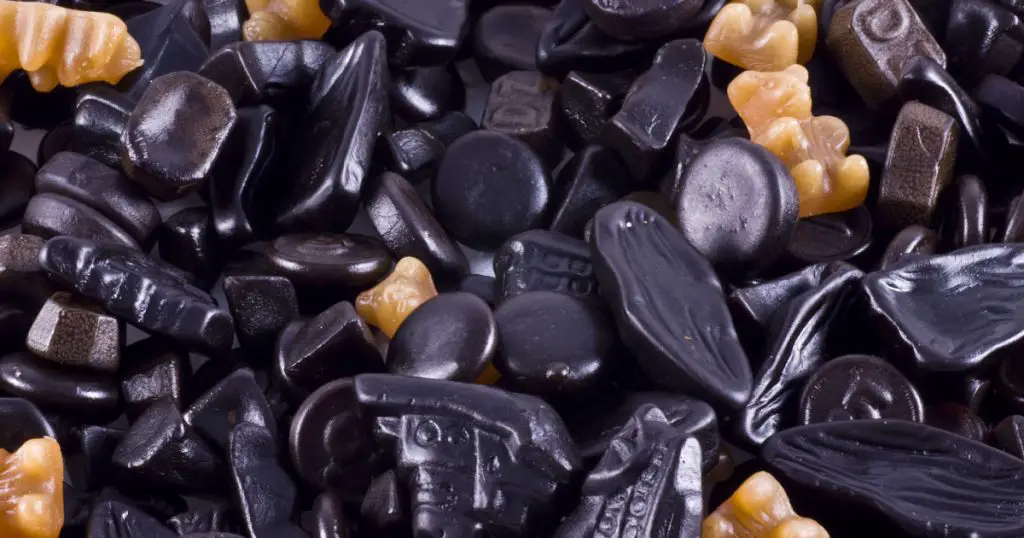
The Netherlands proudly holds the title of the country with the highest licorice consumption. Showcasing the Dutch seriousness when it comes to their candy preferences. However, what might surprise some is that Dutch licorice isn’t the typical sweet treat. It’s heavily packed with salt, adding a unique and savory twist to this popular confection.
25. Queuing is a bit of a gamble
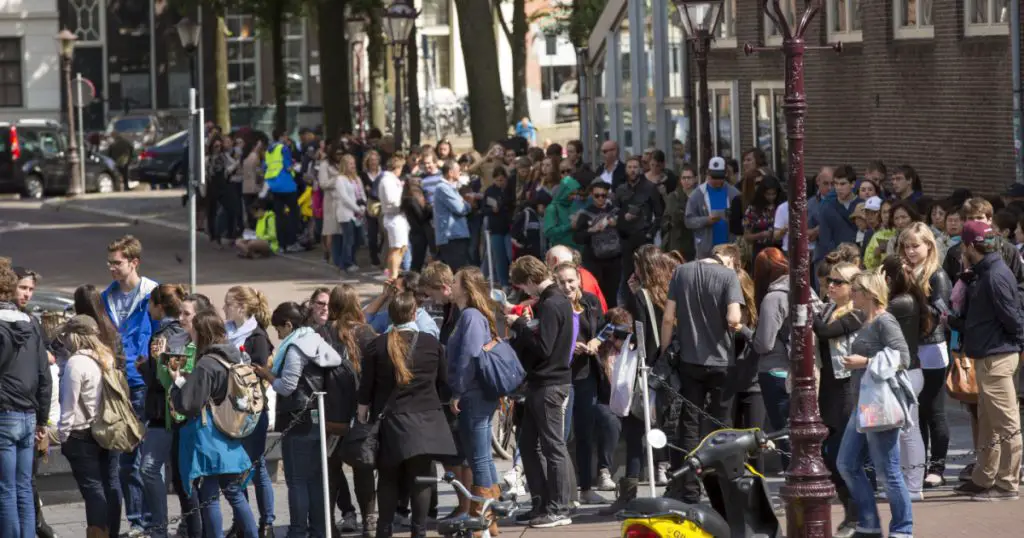
In the Netherlands, there’s a distinctive approach to queues – or rather, the lack of a clear concept. It’s not uncommon to observe Dutch individuals breaking the traditional rules of queuing and forming their own lines, whether at the post office, the bank, or a restaurant. The Dutch tend to have a more informal and flexible approach to waiting in line. Reflecting a cultural nuance in social norms.
26. Dangerous houses? Whatever do you mean?

In the lively city of Amsterdam, the Dutch display a remarkable lack of concern when it comes to the quality of their houses. Living in dwellings plagued by mice fuses with potential for explosive consequences. Even spiral staircases that pose injury risks don’t seem to faze them. The Dutch exhibit a certain resilience and nonchalance, embracing the quirks and challenges that come with their unique living spaces.
27. Women bring in the spring season

In the Netherlands, the official start of spring isn’t determined by the government, television channels, or nature itself. But rather by women. The changing trends in women’s clothing are seen as a unique indicator of the changing weather in the country. This cultural perspective reflects how fashion has become an integral part of acknowledging the arrival of spring in the Netherlands.
28. Being 23 feet below sea level and a sense of calm

While climate change poses a real and pressing threat to several countries, including the risk of submersion, the Netherlands, being approximately 23 feet below sea level, doesn’t seem to evoke alarm or concern among the Dutch. Interestingly, many Dutch citizens may not even be aware that their country is at risk of becoming submerged.
29. Mondays are for sleeping in

If you’re planning a vacation shopping spree in the Netherlands, be prepared for a unique surprise if it falls on a Monday morning. Shops in the Netherlands typically do not open on Monday mornings. The Dutch consider Mondays a day for sleeping in rather than an early start to the shopping week. This cultural practice adds a distinctive touch to the shopping experience in the country.
Read: Get paid $3,000 to sleep: Real-life Sleeping Beauty needed for study
30. Cursing each other with diseases

The Dutch are known for their creativity, and even their curses reflect this uniqueness. While every language has distinct expressions of frustration, Dutch curses stand out. In the Netherlands, people take curses seriously, and it’s not uncommon for someone to literally curse you with a disease when expressing anger or frustration. If you find yourself facing a Dutch individual passionately using diseases as curses, it might be a sign to reflect on any potential offense you may have caused.
31. Wieuwerd Mummies

The Netherlands is home to some strange and eerie places, and the mummies of Wieuwerd are among the most notable. Located in the peculiar hamlet of Wieuwerd, which sits atop raised mounds in the wilderness of Friesland, these mummies attract visitors with their unique and mysterious presence. The site adds an intriguing and somewhat creepy dimension to the diverse array of places to explore in the Netherlands.
32. Weigh yourself to determine whether you’re a witch

In the Netherlands, the method for determining witchcraft differed from the brutal approach in Salem. Instead of burning at the stake, the Dutch used a weight scale. In Oudewater, a sizable weighing scale was employed because it was believed witches were lighter than normal humans. Hundreds of people proved their innocence by stepping onto the scale, and even today, visitors can weigh themselves and receive a certificate attesting that they are not witches. Adding a touch of whimsy to an unusual historical practice.
33. Sleep inside a crane

Contrary to the conventional idea of luxury accommodations, the Crane Hotel Faralda in Amsterdam offers a unique experience of sleeping in a converted crane. With three opulent suites priced at over $1,200 a night, each featuring its own distinctive decor, the hotel provides an indulgent escape. Boasting mesmerizing views and luxurious amenities, including spacious bathtubs, this hotel is a treat for those seeking a unique and high-end lodging experience. Unless, of course, you’re afraid of heights.
34. The oldest, still functioning planetarium

The world’s oldest still-working planetarium is located in the living room of Eise Eisinga, a self-taught amateur mathematician. Eisinga, a Frisian wool-comber, built the model of the solar system in his own living room over 250 years ago to disprove theories that the planets would collide. Although not a conventional scientist, Eisinga’s model is still functional. His home is now open to the public as a museum, formally recognizing his remarkable achievement in creating a lasting and accurate representation of the solar system.
Read: This Photographer Accidentally Shot a Meteor While Capturing a Volcano
35. Christmas markets in caves

Exploring Christmas markets in a new city provides insight into how the local culture celebrates the holidays. In the Dutch town of Valkenburg, the festive spirit takes on a unique twist, as Christmas markets are set up inside literal caves. These caves, once quarries, have been transformed into annual Christmas markets, offering visitors a distinctive and enchanting experience surrounded by the underground beauty of Valkenburg.
Read: This treetop walkway is world’s longest and a must-see attraction
36. Views of three countries simultaneously

Labyrint Drielandenpunt, or the Three-Country Labyrinth, stands as Europe’s largest outdoor shrub maze. Renowned for its unique feature of offering views into three countries simultaneously: the Netherlands, Belgium, and Germany. Constructed with 17,000 shrubs, reaching the maze’s center takes approximately an hour. Once at the central point, visitors can enjoy panoramic views of any of the three countries from a raised platform, providing a distinctive and immersive experience at the intersection of these European nations.
37. A Meta Maze

The Meta Maze in Tilburg adds an exciting twist to the typical maze experience by incorporating surreal spaces and dream-like art pieces. As visitors navigate the maze, they find themselves walking through rooms filled with these imaginative and unconventional features. Adding an extra layer of complexity and intrigue to the traditional maze concept.
38. Visit a floating farm

Situated in the city of Rotterdam, the world’s first floating farm is an innovative approach to modern agriculture. It’s additionally operated by just two humans and three robots. With 35 cows on board, this floating farm produces 185 gallons of milk daily. The concept combines sustainability and efficiency, providing a unique glimpse into the future of farming. Powered by nearby solar panels, the farm collects rainwater and purifies it into drinking water for the cows. The cow manure is utilized to fertilize the pasture located on the farm’s top level, creating a closed-loop system.
39. A Botanical garden designed to fight the black death

Nestled within the streets of Amsterdam, the Hortus Botanicus is a must-visit for plant enthusiasts and those who appreciate flora. Established in the 1600s during the devastating Black Death outbreak, Dutch doctors sought to advance medicinal research to combat the plague. The Hortus Botanicus Amsterdam was born from this need and stands as one of the oldest botanical gardens still in existence today. It continues to house a diverse collection of old plants and medicinal herbs, attracting learners from around the world. Beyond its educational value, the garden’s beautiful infrastructure adds to the intrigue for incoming visitors.
40. A human anatomy museum

Amsterdam boasts numerous peculiar and distinctive museums that are rarely found elsewhere in the world. Museum Vrolik falls into this unique category. This museum serves as a treasure trove of human anatomy and pathology, offering a fascinating journey for those seeking more knowledge about the intricacies of our bodily vessels. Museum Vrolik provides a distinctive and immersive experience, making it a noteworthy addition to the diverse cultural offerings of Amsterdam.
41. A bar that used to accept monkeys as payment

Known locally as In’t Aepjen, this unique bar in Amsterdam has been quenching people’s ale cravings since the 1500s. The bar’s name harkens back to the golden days of the Dutch Empire, where sailors, short on actual money, would settle their bills with the pets they had acquired during their travels. Often monkeys. However, the charm faded when the bar became overwhelmed with monkeys, causing other customers to complain about fleas. Eventually, the monkeys were given to Gerard Westerman, a regular at the bar, who moved them to his personal garden. Which later became Amsterdam’s Artis Zoo. Thus, this small location played a role in the creation of two historical venues in the city of Amsterdam.
Read: Monkey ‘gives pal mouth-to-mouth’ like human after she ‘collapses to ground’
42. A museum for the oldest profession in history

Since the year 2000, brothels have been legalized in the Netherlands and operate under official permits. The city of Amsterdam is home to one of the largest ‘red-light districts’ in the country. Where this work is regulated. Additionally, Amsterdam features a museum dedicated to the workers in the adult entertainment industry. Providing insight into this aspect of the city’s history and culture.
43. A miniature museum featuring its very own mayor

Madurodam is a 1:25 scale model of a Dutch town. Featuring miniature versions of typical Dutch landmarks and buildings found throughout the country. The model is named after George Maduro, a Dutch student who fought in the resistance against Nazi occupation forces during World War II. His parents provided initial funding for the project, which was completed in 1952. Princess Beatrix of the Netherlands was appointed the mayor of the town, a position she held until becoming Queen. Today, a mayor for the miniature town is still elected by a youth municipal council consisting of 25 pupils from the region.
44. Herring ice-cream

Robin Alting, an ice cream shop owner in Amsterdam, gained national attention in the Netherlands when he introduced Raw Herring Ice Cream to his menu. While herring is a beloved dish in Dutch cuisine, the combination of the fishy favorite with sweet ice cream left many people in the country unsure about this unique flavor pairing.
45. A floating cat sanctuary

Contrary to the common belief that cats dislike water, The Cat Boat (De Poezenboot) in Amsterdam is a floating cat sanctuary where felines live their best lives. Established in the 1960s by Henriette van Weelde, this unique sanctuary serves as a refuge for abandoned, sick, or stray cats. The Cat Boat provides a special and caring environment for these furry residents in the heart of Amsterdam.
46. The largest flower garden in the world
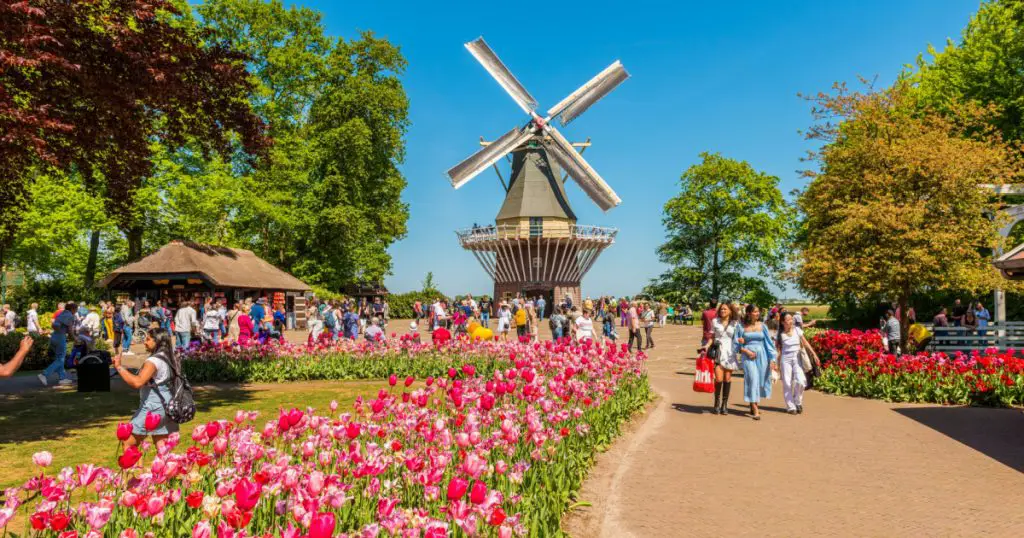
Lisse, a town in the Netherlands, declares Keukenhof as Europe’s most beautiful botanical garden, and after seeing the pictures, it’s easy to agree. Keukenhof Park is renowned as one of the largest flower gardens globally, earning its fitting nickname, “The Garden of Europe.” The park showcases stunning displays of flowers, making it a must-visit destination for those who appreciate the beauty of blooming gardens.
47. Clogs literally everywhere
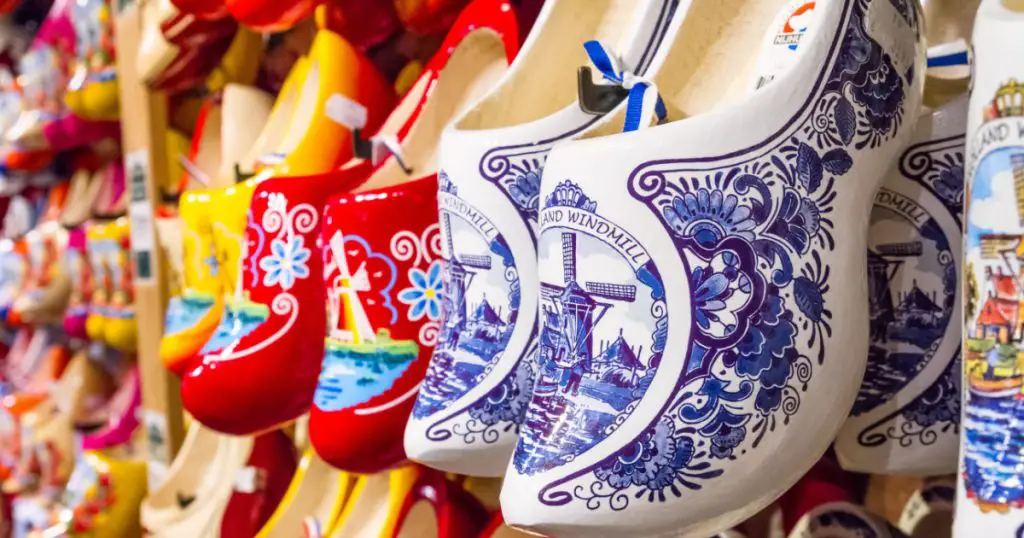
The Netherlands is globally renowned for its expert shoemaking, particularly the traditional Dutch clogs. Since the 1320s, Dutch clogs have been a popular choice for traditional footwear. These iconic wooden shoes are hand-carved and hand-painted with intricate and beautiful designs, showcasing the craftsmanship that has made them a symbol of Dutch culture for centuries.
48. Baby names on windows

The Dutch have a charming tradition of celebrating the arrival of a new baby by adorning their windows and lawns with heaps of decorations. This festive display proudly announces the birth of a new member of the neighborhood. Offering parents a cute and creative way to share the joyous news of their newborn.
49. The KattenKabinet – Cat Art Museum

In 1990, a man named Bob Meijer experienced the loss of his beloved cat, and he channeled his grief into an artistic endeavor. The result is the KattenKabinet, a museum located in Amsterdam dedicated to cats of all shapes, sizes, and species. This unique museum serves as a tribute to the feline companions that have left a lasting impact on the lives of cat lovers.
Read: The National Cat of Norway: Norwegian Forest Cats Are Said To Have Been “Pets of the Vikings”
50. Teeny tiny stacked houses

The Inntel Hotels Amsterdam Zaandam is a stacked hotel that offers a unique architectural experience. Described as a “modern take” on the Zaan region’s “history,” this hotel’s design is likely something you haven’t seen before. Especially if you live in the United States. The innovative architecture of the Inntel Hotels Amsterdam Zaandam adds to its distinctive appeal, making it a noteworthy landmark in the area.
51. The inventors of Bluetooth

We owe a debt of gratitude to the Dutch for keeping us connected. In 1994, Dutch engineer Dr. Jaap Haartsen pioneered the creation of a wireless connection between devices. His idea, conceived while working for Ericsson in Sweden, eventually led to the development of Bluetooth technology. In recognition of his groundbreaking contribution, Dr. Haartsen was added to the National Inventors Hall of Fame in the United States in 2015. As reported by Volkskrant, Bluetooth is now utilized on over 3 billion devices worldwide.
52. Narrow buildings due to taxes
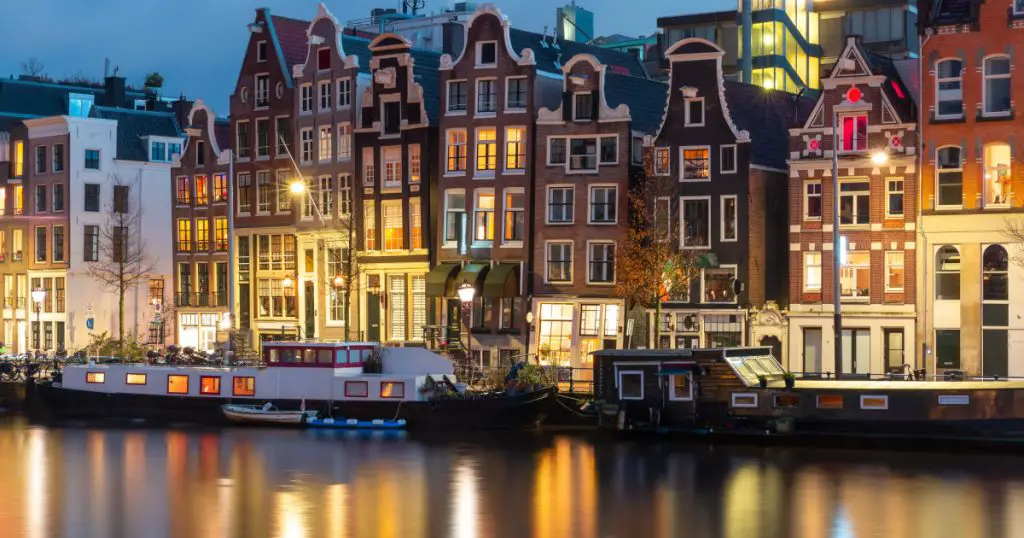
Exploring the canals of Amsterdam, whether by boat or on foot, reveals an intriguing aspect of Dutch architecture. The narrow and tall buildings that line the canals throughout Holland are a result of a specific tax law from the past. In historical times, property taxes were higher for wider buildings. Thus leading to the construction of tall and narrow structures as a clever way to avoid higher taxes. This unique aspect of Dutch architecture is a testament to the creative adaptations people made to navigate tax regulations.
Keep Reading: 30 Photos Of Things You’ll Be Glad You Haven’t Seen Before
Sources
- “Bizarre, Expensive or Incredible Things Found Only in the Netherlands.” Investing. Audrey Kyanova. October 31, 2023
- “50 Interesting and Fun Facts about the Netherlands.” Live the World. Kelsie Colclough. July 18, 2023
